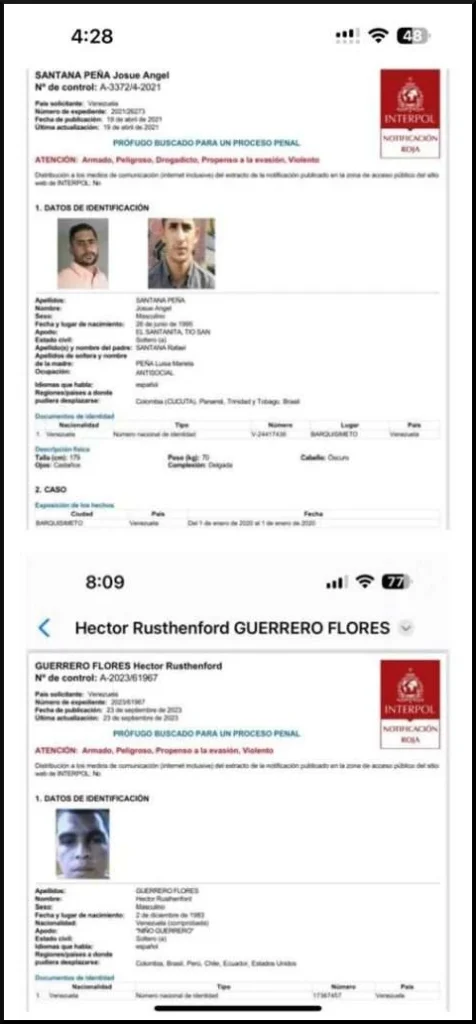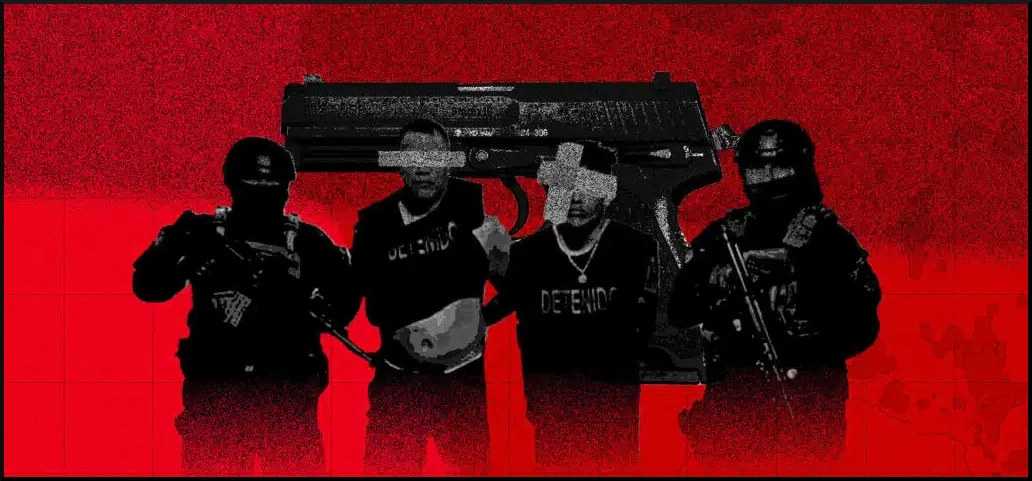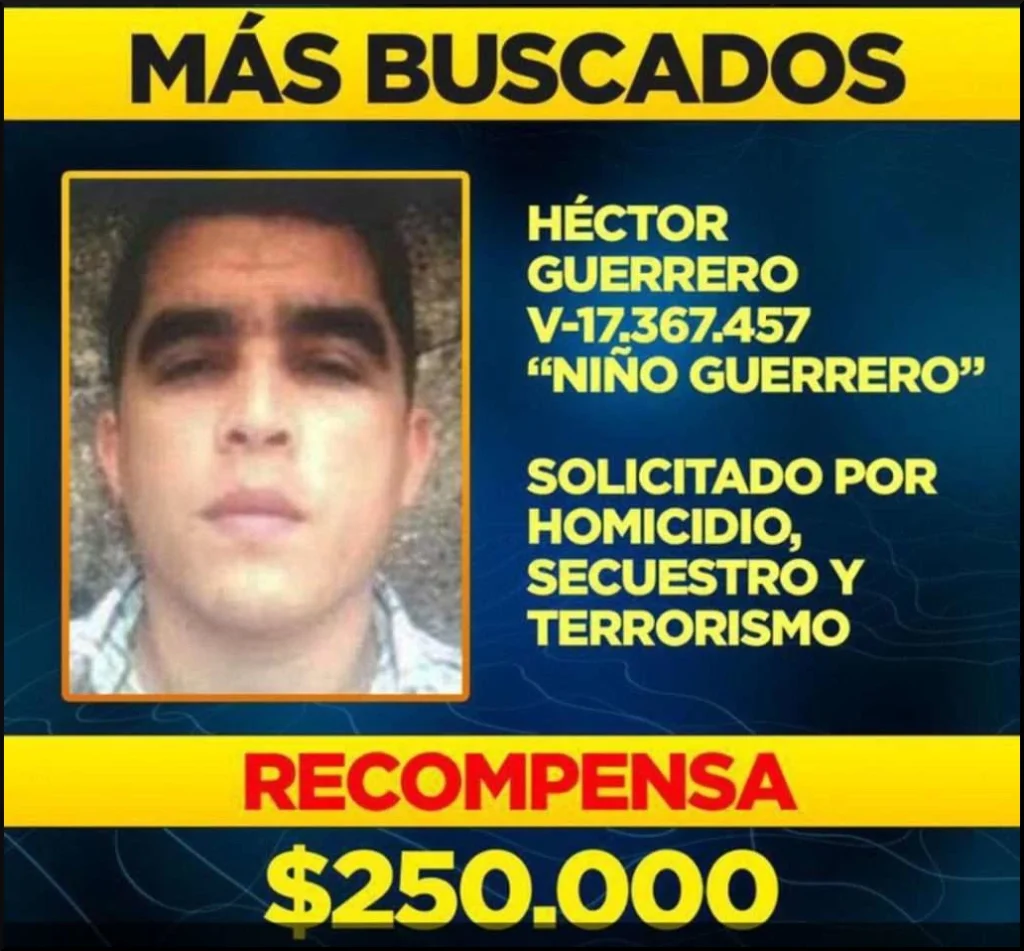By Eligio Rojas, published on the Orinoco Tribune, March 21, 2025
“Cosmic dust.” This is how President Nicolás Maduro described the defunct Tren de Aragua, the criminal gang whose name echoes across Latin America and beyond as if it was an organization with a central command, camps, and an arsenal.
“The Tren de Aragua is cosmic dust in Venezuela; it no longer exists, we defeated it,” President Maduro declared on Wednesday, March 19 before a group of cattle ranchers at the Simón Bolívar Park in the Generalísimo Francisco de Miranda Air Base in La Carlota, Caracas. It was the 48th National Zebu and Cattle Fair, where the president took the opportunity to respond to his US counterpart Donald Trump’s claim that all Venezuelan migrants belong to the Tren de Aragua gang.
This criminal organization went through three phases, according to documents compiled by the Venezuelan National Anti-Extortion and Anti-Kidnapping Command. The first phase began with its founding in 2008 around railway construction projects in central Venezuela. The gang, led by Johan Petrica (one of the group’s founders), extorted “protection fees” from workers’ cooperatives. This is how the name Tren de Aragua (Aragua Train) originated.
Héctor Guerrero Flores (alias Niño Guerrero), who began his criminal career in 2005 with the murder of police officer Oswaldo Antonio González Castillo on September 3 of that year in the 24 de Julio neighborhood of Santa Rita, Aragua state, later joined this gang. He avoided arrest at the time.
First Arrest
Niño Guerrero’s first arrest occurred on January 19, 2010, on the Maracay-Turmero Intercommunal Road in the Samán de Guere sector of Aragua state. There, he was set to meet with his gang to review recent home robberies in southern Aragua state.
That day, a Scientific, Penal, and Criminal Investigative Corps (CICPC) task force arrested Niño Guerrero and Freddy La Fresa, as well as other criminals. Authorities confiscated 13 watches of various brands and models, a Gamo-brand replica firearm, four pistol magazines, and 36 bills of various currencies.
This imprisonment marked the second phase of the Tren de Aragua. From the Aragua Penitentiary Center in Tocorón, Guerrero began establishing gang cells in central Venezuela, focusing on home robberies in Maracay and other towns.
Two years after his arrest, on August 29, 2012, Niño Guerrero and 14 gang members escaped the Aragua Penitentiary Center, fleeing to Lara and Portuguesa states. He paid 500,000 bolívars to Luis Alberto Gutiérrez Linares, director of the Tocorón Prison, to facilitate the escape.
Nine months later, on May 18, 2013, Niño Guerrero was recaptured in the Nueva Segovia housing area of Barquisimeto, Lara state. Back in prison, the Tren de Aragua leader continued his criminal operations, now stockpiling firearms, ammunition, and explosives.
Tocorón Prison Raid
This second phase of the gang ended on September 20, 2023, when the government deployed 11,000 security agents to take control of the Aragua Penitentiary Center in Tocorón through the Gran Cacique Guaicaipuro Operation. By the time of the raid, the Tren de Aragua’s leadership had fled. Remigio Ceballos, interior minister of Venezuela at that time, claimed that Niño Guerrero lived in the prison though he “enjoyed total liberty.” “He was here, but he was already free,” Ceballos stated while displaying seized military equipment.
Niño Guerrero’s escape: The third phase begins
Upon request from Venezuelan authorities, Interpol issued Red Notices for Héctor Guerrero Flores (Niño Guerrero) and Josué Santana (El Santanita), key operators of the Tren de Aragua. Both fled Tocorón before the raid.
 The third phase saw the Tren de Aragua fragmented into transnational cells operating without a central command. Media reports highlight how the group’s name is now exploited by opportunistic leaders for political purposes. For example, in February 2024, an alleged Tren de Aragua cell was hired by Iván Simonovis to assassinate Ronald Ojeda, a Venezuelan former military officer under Chilean government protection. Simonovis allegedly sought information on weapons linked to Operation White Bracelet, a plot to abduct President Maduro. Simonovis believed that Ojeda had sold the weapons to others without his permission.
The third phase saw the Tren de Aragua fragmented into transnational cells operating without a central command. Media reports highlight how the group’s name is now exploited by opportunistic leaders for political purposes. For example, in February 2024, an alleged Tren de Aragua cell was hired by Iván Simonovis to assassinate Ronald Ojeda, a Venezuelan former military officer under Chilean government protection. Simonovis allegedly sought information on weapons linked to Operation White Bracelet, a plot to abduct President Maduro. Simonovis believed that Ojeda had sold the weapons to others without his permission.
The group that killed Ojeda was composed of Rafael Enrique Gámez Salas (El Turco), Carlos Francisco Gómez Moreno (Boby), Luis Alfredo Carrillo Ortíz (El Gocho), and Dayonis Junior Orozco Castillo (Botija). El Turco was arrested in the US on December 30, 2024. The others were captured in Colombia. Venezuela has requested their extradition.
Another faction of the disbanded Tren de Aragua was allegedly sheltered by former Colombian President Iván Duque and sent to Venezuela ahead of the July 28, 2024 presidential elections. Led by Niño Guerrero, the group’s mission was to create violence in the streets and declare the alleged victory of the far-right candidate Edmundo González. On July 29, the group attempted to storm Miraflores Palace after President Maduro’s victory was announced.
Cabello: Someone is Lying
The Trump administration labeled the Tren de Aragua an international terrorist organization, and with this allegation deported Venezuelan migrants to El Salvador, where President Nayib Bukele shaved their heads and detained them in a concentration camp-like prison.
Venezuelan Interior Minister Diosdado Cabello questioned whether all deportees were Tren de Aragua members, and demanded the US extradite captured suspects. “The US is acting in a confusing manner. They promised to send us Tren de Aragua members but they have not. Someone there is lying.”
Venezuelan Attorney General’s Office describes the Tren de Aragua as “the most powerful criminal gang in Venezuela, the only one to establish transnational cells abroad.” Sentence 013 of the Supreme Court’s Criminal Chamber approved the extradition of four suspects from the US and Colombia for Ojeda’s kidnapping and murder.
“It is essential to understand the adversary being combated, and in this specific case, it involves the Republic of Chile, the Republic of Costa Rica, the Republic of Colombia, the Venezuelan State, and various Latin American countries,” reads the ruling. “We are confronting the most powerful criminal structure in Venezuela, and the only one that has been able to establish cells on foreign borders, transitioning from a confined prison gang into multiple transnational cells with a broad criminal portfolio. Notably, this case highlights the roles of Venezuelan citizens Carlos Francisco Gómez Moreno alias ‘Boby,’ Dayonis Junior Orozco Cartillo alias ‘Botija,’ and Rafael Enrique Gamez Salas alias ‘Turco,’ as leaders of these cells tasked with executing criminal acts both within and outside the Venezuelan national territory.”
Editor’s Note: Since the names of the actual criminals are clearly listed below, the United States could comply with the Venezuelan request for extradition. Instead, hundreds of men, mostly legal immigrants, have been arbitrarily culled from the streets here in the U.S. and placed in horrific prison camps in Guantanamo, and now in El Salvador, rather than returned to their homes in Venezuela where any criminals could be identified and subject to due process.

